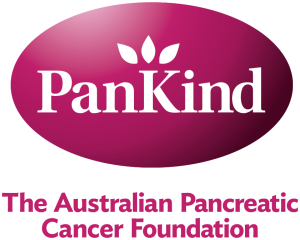The research process – from idea to impact

The process for research and all science is complex, dynamic and full of unforeseen challenges as we attempt to understand new phenomena. This is especially true for cancer, an inherently complex disease where there are thousands of different types, from the genetic and molecular levels through to the whole system level. Even within the same cancers, that affect the same organ, there is huge variation.
There is no simple solution or cure that can apply to every case. Dedicated scientists work tirelessly for decades striving to make breakthroughs in treatments and diagnosis all to help more people survive. In some cases, it can take longer than 10 years for discoveries to be translated into clinical practice. Despite that, any progress that helps some people makes it all worth it. And we have achieved some incredible feats in making advancements in a lot of diseases that have saved many lives. So what happens in research?
Developing an idea
The scientist comes up with an idea, based on existing findings or inspiration they may have. They ask a research question – whether it is to test the effects of a new substance, explore how something may behave, or measure the levels of something that could be implicated in a disease (such as a ‘biomarker’ – or a biological sign).
The researcher commences development of the idea – in clinical research, this often involves creating the new substance or treatment (such as drug design) or developing the method of measuring the biomarker. This usually takes place ‘in vitro’, meaning ‘in the glass’ or otherwise known as ‘test-tube experiments’. It involves cells, tiny microorganisms, or molecules (such as proteins) outside of their normal biological environment.
Preclinical studies
The new approach, once better understood from the in vitro experiments are then tested in non-human subjects. Called in vivo, meaning ‘within the living’ it is applied in animal studies such as using mice or fish to gather information about its efficacy (or effectiveness) and safety.
Clinical Trials
This is primarily for new treatments, and the idea is to test it for the first time in a small group of people. Phase I trials are designed to check the safety of a new intervention. If it is a drug trial, the dosage is also usually varied to work out the optimal amount. Because of the small sample, the effectiveness of the treatment in people is usually examined in later phases.
In a Phase II trial, the intervention is tested in a bigger group of people to start looking at efficacy. Side effects are also carefully evaluated.
If a new treatment or test has so far proven safe enough and shown promise to be effective, it progresses to a Phase III trial. In these trials, the sample size is much larger and a lot of data is gathered to show convincingly that it works. To do this, the intervention is compared to a control group. In cancer, the control group usually receives the current standard treatment that is available, or a standard treatment combined with a placebo if the new therapy is a combination treatment. Placebos are only used alone if there is no currently available standard treatment. In a Phase III trial, any adverse effects are also thoroughly examined and information is collected on how to make it as safe as possible. This trial is the last stage before gaining clinical approval. A new therapy or test must, without doubt, be effective and safe in order to get approval from a body such as the Therapeutic Goods Administration (Australia) or the Food and Drug Administration (USA).
In Phase IV clinical trials, new treatments or diagnostic tests may continually be monitored after approval to ensure they are safe, effective and have no long-term effects.

Participating in trials
Many patients who do not currently have many available treatment options, such as those with advanced cancer, might consider participating in a clinical trial. Clinical trials are run by research institutes, universities, specialist clinics and medical companies who design therapies. Participation is always voluntary and can come with a range of benefits. Patients may experience a positive response to a new treatment that could improve their outcomes. Depending on the trial, the intervention tested, and the phase of the trial the chances of this occurring vary greatly. The point of clinical research is to understand who responds to which treatments or be able to predict how a disease acts. Not everyone responds to every treatment tested, and for the large portion of people who might not benefit personally from a trial, they have the opportunity to help others. All research allows us to better understand disease in order to work out how best to tackle it. If people have the opportunity to volunteer for a trial, they usually undergo a lengthy screening process. This takes place to ensure the right people enter the trial who might be most suitable for the treatment tested, and to ensure their safety. They often have to fit certain criteria and might be asked several series of questions. Any patients who might be interested in participating in a clinical trial should always consult their treating doctor or oncologist first. The treating doctor will be able to advise on what trials they may be eligible for and the potential risks and benefits.
Publication
Once finished, all research aims to be published. The study is usually published in a scientific ‘journal’ after scrutinising peer-review (from other expert scientists in the field). They all have to mutually agree that a study has been conducted reliably, accurately, and achieved significant enough outcomes that it can influence understanding in the field. All studies should be published in a scientific journal regardless of the stage of research, to ensure they are scientifically valid. Studies that are unpublished should be read and critiqued carefully until they are done so.
What does this mean for Pancreatic Cancer?
Unlike other types of cancer, most Pancreatic Cancer research currently sits in the early-stage preclinical phases. However, the good news is we have seen dramatic improvements in other cancers with discoveries in treatment and early diagnosis boosting survival as much as 20% over the past three decades. The difference is research and funding. As awareness is built around Pancreatic Cancer and its ruthlessness, momentum towards increased funding will gain, allowing research to catch up to the great strides other cancers have made.



